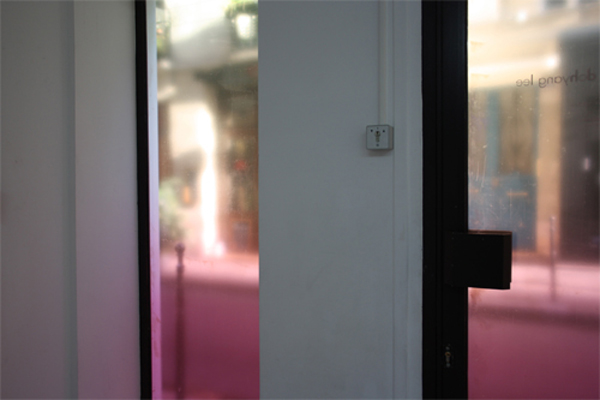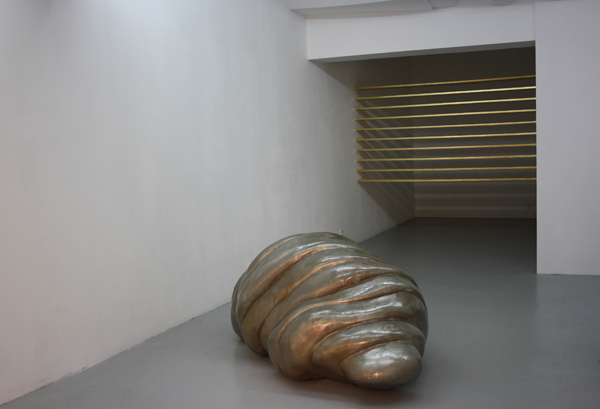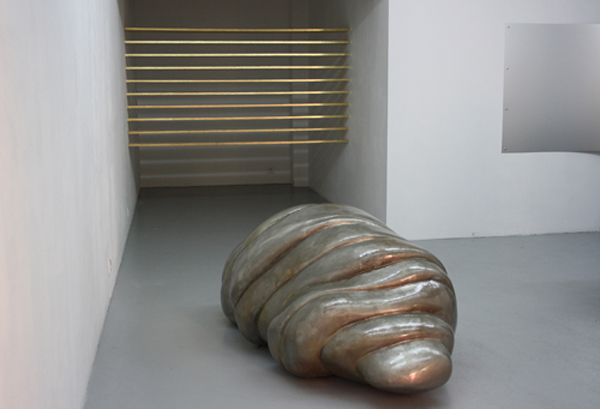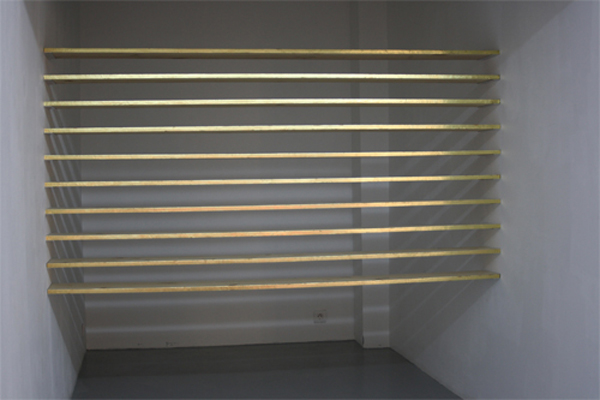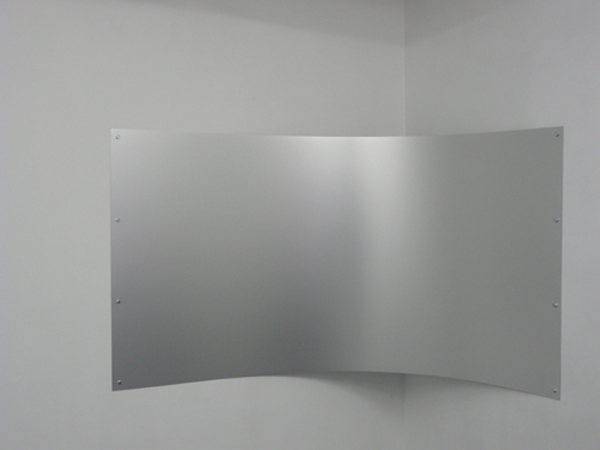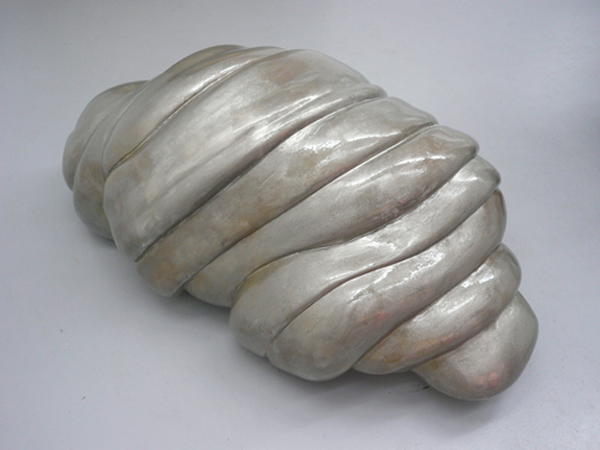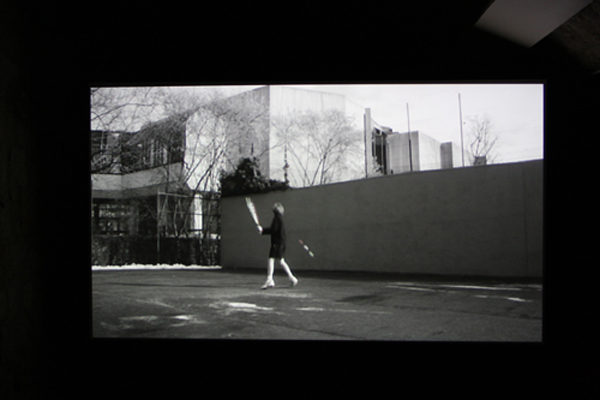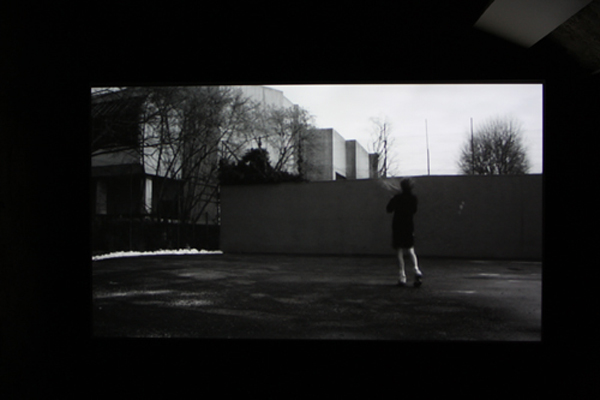Working Backwards
Laetitia Badaut Haussmann
13 November – 23 December 2010
“Everything must be considered as though it were spoken by a character in a novel.” Roland Barthes (Roland Barthes par lui-même)
In 1944, the Argentine lady of letters and patron Edelmira Thompson de Mendiluce published a text which, for many, prefigured the New Novel: Poe’s Room, based on Edgar Allan Poe’s The Philosophy of Furniture. In this short essay, Poe describes the ideal decoration for a room, ardently defending the pure English style in contrast to the ostentatious tastes of the American bourgeoisie. It is unknown whether the writer is evoking a real room, or if it is a pure product of his imagination. Edelmira commissioned a canvas from a painter, her friend Atilio Franchetti, based on the instructions given in Poe’s text. Then, through fantasy or folly, decided to have the same room built in the gardens of her hacienda in Azul. No trace remains of this construction apart from the rather precise description given by Roberto Bolaño in his chapter about the Mendiluce family in his Nazi Literature in the Americas.
Without any material trace, today these bedrooms have become mythical. One might legitimately question the reality of their existence. Physical objects or products of the imagination, they are known today only by the texts that describe them. They exist, therefore, only in the readers’ imaginations. Thus, Poe’s Room becomes a moving zone whose territory is the reader. At the crossroads of these two texts, Laetitia Badaut Haussmann attempts to retranscribe this floating space. She gives form to this “non-place,” this utopia, a term that needs to be understood according to its dual etymology – a place which is not (the existence of the room being called into question) and a place of happiness (it’s where Edelmira would have spent the last moments of her life, in all likelihood her most peaceful).
Making pianos sound that are no longer there, playing with the colors of a work, preserving an object beyond all reach, by its museumification… The work of Laetitia Badaut Haussmann is often initiated under these pretexts. In every sense of the term: the pretext being at once a motif of dissimulation, that which is there before the text (a pre-text), or even, why not, the pretext, the purple-bordered toga worn by young Roman nobles. Purple, just as found in the rooms of Edelmira and Poe. It is not by chance. It’s a leap, no doubt, but the pretext is also there for that, it hides the motive for an action as much as it reveals it. For Laetitia Badaut Haussmann it becomes a field of study that gives rise to a real situation and to its transcription (pictorial, cinematographic, sculptural, sonorous…).
Thus the quotation from Jean-Luc Godard with which the film Tiebreaker begins, is also a means to transform a text into a context. Made literal, this is applied to the letter, without fear of impoverishment. The artist seizes it to define the blurring zones to be surveyed, transitional spaces between an abstract idea and its rendering. Neither a trace, nor a pure materialization, the work drifts forward, a space at once below and beyond the original, a geography in movement towards probable evolution. Opposed to all spectacularization, the pretext completely dissolves in its new form and only reappears intermittently, depending on the knowledge of the viewer alongside the desire of the artist to render it visible. The nascent form never totally recovers. The separation produced works as an escape route, making a subterfuge of the object, a “non-proof”. The non-place therefore becomes a communal place, less a monument for the original than a celebration of its absence.
In the work of Laetitia Badaut Haussmann, it is as much a question of seeing as being with, the objects acting as a way in. From any point of view, the work is a medium. The artist creates intermediary zones, intervals like so many bridges in a fragmented chronology, spaces to which it is impossible to deny physical existence, but which are nevertheless pure imagination. Genuine views into the mind, and a homage which Elmira would, I’m sure, have appreciated for its real value.
Edelmiro Carrozzone, Buenos Aires, 1st November 2010
(Translated from the Spanish into French by Mickaël Pierson, and into English by Adam Biles)
click here for printable version
Window Color, 2010′ installation, inkjet prints on sticky paper variable dimensions, unique piece
An Ecole Nationale Supérieure d’Arts production, Paris Cergy
Could you be mine, 2010, sculpture, resin, bronze powder, gold powder 150 x 50 x 70 cm, unique piece
Fairy shelves, 2010, installation wood, gold leaf variable dimensions, unique piece
Curve serie # 1, 2010, installation, aluminium plaque, 100 x 200 cm, unique piece
Could you be mine, 2010, sculpture, resin, bronze powder, gold powder 150 x 50 x 70 cm, unique piece
Fairy shelves, 2010, installation, wood, gold leaf, variable dimensions, unique piece
Curve serie # 1, 2010, installation, aluminium plaque, 100 x 200 cm, unique piece
Fairy shelves, 2010, installation, wood, gold leaf, variable dimensions, unique piece
Curve serie # 1, 2010, installation, aluminium plaque, 100 x 200 cm, unique piece
Could you be mine, 2010, sculpture, resin, bronze powder, gold powder 150 x 50 x 70 cm, unique piece
Tiebreaker, 2010, video, 5’10’’, black and white, sound PAL – 4/3′, Edition of 5

